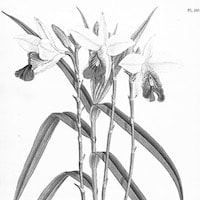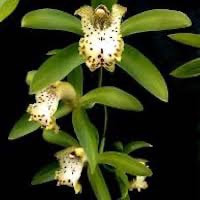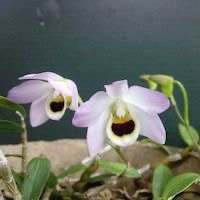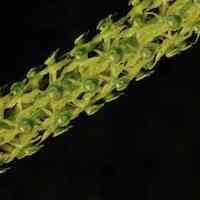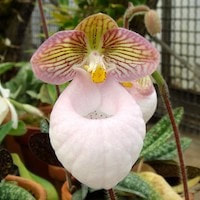WOR9- Women's Oriental 9 - The thyme is cumin
|
Native Singaporean Orchid notes: C [(gaskelliana x lawrenceana) x intermedia] Blau x Lc Mini Purple Blau
C [(gaskelliana x lawrenceana) x intermedia] Blau x Lc Mini Purple Blau is an orchid hybrid known for its striking blue flowers and compact size, making it ideal for the Oriental 9 (Women) team-building perfume workshops. The flowers feature varying shades of blue on the sepals and petals, complemented by a darker blue lip, and emit a pleasant fragrance. This orchid symbolizes teamwork and unity, highlighting the beauty of collaboration and the creation of something extraordinary through harmonious blending of diverse elements.
|
Therapeutic Orchid notes:
|
Arundina Blume
Arundina Blume, known as Zhuye Lan (bamboo leaf orchid) in Chinese or chiau a hoe in Taiwanese (Hokien) dialect, is a notable orchid species admired for its distinctive traits. Resembling reeds, its Latin-derived name Arundo reflects its leafy appearance akin to bamboo. Despite its terrestrial nature, its flowers resemble those of the Cattleya orchid, enhancing its aesthetic appeal. Widely distributed from India to Southeast Asia, including China and the Ryukyu Islands, Arundina symbolizes natural beauty and cultural significance in the region, captivating orchid enthusiasts with its graceful leaves and stunning blooms. |
|
Cymbidium hookerianum Rchb. f.
Cymbidium hookerianum Rchb. f., known as Hutou Lan in Chinese, is a prized orchid celebrated for its medicinal properties. Blooming from February to May in Bhutan and January to April in China, it holds significant traditional uses. In India, its seeds serve as a hemostatic to staunch bleeding wounds effectively. Chinese medicine values the entire plant from Yunnan for treating fractures and soft tissue injuries, aiding in bone and tissue recovery. This orchid's role in traditional healing underscores its enduring value in natural medicine practices. |
|
Dendrobium flexicaule
Dendrobium flexicaule, known as Qujing Shihu in Chinese, is a rare and remarkable orchid species recognized as a shihu due to its exclusive growth on rocks. Discovered in 1986, its scarcity adds to its appeal. Cultivation efforts by the Xixia Forestry Bureau in Henan Province aim to replicate its natural habitat conditions. As a shihu orchid, Dendrobium flexicaule is valued in traditional medicine, motivating efforts to conserve it for its potential medicinal benefits, highlighting the importance of preserving botanical diversity and traditional herbal knowledge. |
|
Dienia cylindrostachya Lindl. syn. Malaxis cylindrostachya (Lindl.) Kuntze
Dienia cylindrostachya, also known as Malaxis cylindrostachya (Lindl.) Kuntze, is a terrestrial orchid found in the Himalayas, Bhutan, Nepal, northeastern India, and partly in Pakistan. It holds medicinal importance, especially in Uttar Pradesh and Uttarakhand, where it's used as a tonic for general weakness. The orchid's pseudobulb is processed into a powder for making this tonic, valued for its ability to revitalize and nourish, highlighting its role in traditional herbal medicine and cultural heritage in supporting community health and vitality. |
|
Paphiopedilum micranthum Tang et Wang
Paphiopedilum micranthum Tang et Wang, known as Xiaohuadou Lan (small flower pouch orchid) in Chinese and Huayezi in Chinese medicine, is a newly discovered orchid species found in Yunnan, Guizhou, Guangxi, and Vietnam. It grows terrestrially and lithophytically, adding to its allure in natural landscapes. Despite its unscented flowers lacking nectar, the orchid attracts pollinators through floral mimicry. In Chinese herbal medicine, it is prized for its bitter, cooling properties that detoxify and cleanse the body, particularly effective against heat and toxins. It's also used to calm nerves, treat neurosis, and manage respiratory ailments like pneumonia and measles, making it a valued resource in traditional health practices. |
Other scent note
Scentopia Library Reference ingredient
Clover - Check details at Scentopia's scent library
Download the guided mediation that works best with this Orchid fragrance oil
| women_oriental_essential_oil_orchi_00009.mp3 | |
| File Size: | 181981 kb |
| File Type: | mp3 |
![C [(gaskelliana x lawrenceana) x intermedia] Blau x Lc Mini Purple Blau perfume ingredient at scentopia your orchids fragrance essential oils](/uploads/1/1/6/3/116352749/scentopia-oriental-fragrance-oil-for-women-00009_orig.jpg)
